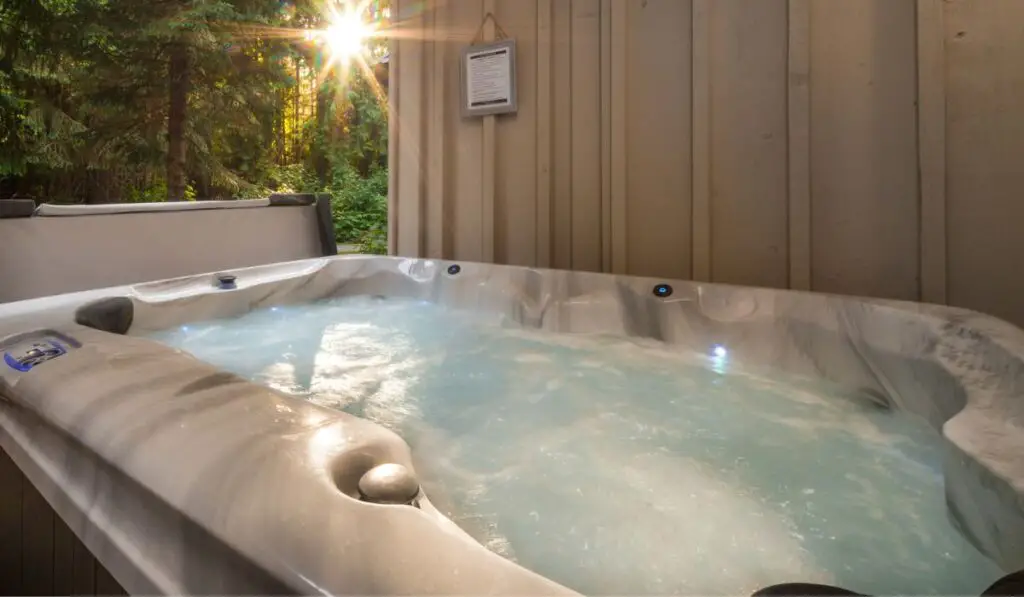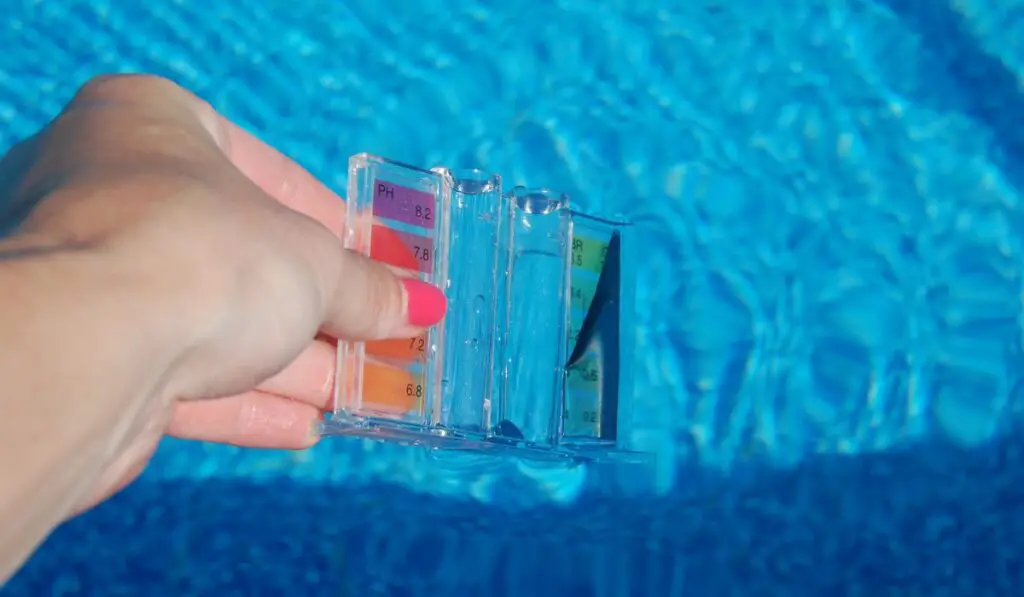Every time someone uses your hot tub, they may leave germs, body oils, lotions, hair, and other things behind in the water. All this stuff attracts bacteria and other organisms, so sanitizing your hot tub is really important. Shock treatment is the most effective way to do this, and it’s super easy! But when should you shock a hot tub?
It’s recommended to shock-treat a hot tub once a week, or more if you use it heavily. That said, if you notice any unusual smells, cloudy water, or foaming, you should shock the hot tub immediately. Follow the instructions on the treatment product and make sure to give it enough time to do its job.
Shock treatment can get rid of bacteria, algae, and other organic contaminants, leaving a healthier environment that you and other bathers can properly enjoy. But it’s also a strong chemical treatment, so you have to be careful about using it. Let’s look at when and how you should shock a hot tub and what happens if you do it wrong.
What’s the Best Time of Day to Shock a Hot Tub?

Ideally, you should shock your hot tub in the evening, once you’ve finished using it — but also when the water is still warm. This will give the chemical enough time to do its job, and any excess chlorine can dissipate before you use the hot tub again the next day.
However, if evening doesn’t work for you, any time of day should be fine, as long as you give the shock enough time to work and follow it up with regular testing of pH and chlorine levels.
How Often Should You Shock a Hot Tub?
Ideally, you should shock your hot tub at least once a week. If several people are using it or if there are kids and pets in the pool, shock it more often. Also, if you’ve been using chemical-based products such as tanning lotions, shampoos, and soaps, you should consider shock-treating your hot tub more often.
Additionally, any time you notice a change in the water clarity, odor, or touch, it’s time to shock your hot tub.
How Do You Shock a Hot Tub?
There are two main types of shock treatments for hot tubs: chlorine-based and non-chlorine based.
Chlorine-based shock treatment (on Amazon) uses chlorine granules that kill living organisms, break down organic matter, and remove the remnants of chemical products.
Non-chlorine, or chlorine-free, shock treatment (on Amazon) combines oxidizing agents and enzymes to break down the organic matter. It also clears out the water but doesn’t have the same disinfecting qualities (killing bacteria) as chlorine-based shock treatments.
While a chlorine-based shock treatment is usually more effective and gives better results, non-chlorine based treatments are safer and more environmentally friendly.
So it’s recommended to do a non-chlorine shock for regular maintenance and use a chlorine-based shock every once in a while when you feel the water needs it.
Here’s a quick guide to shock-treating your hot tub:
Step 1: Test the Water
Test the alkalinity, pH, and chlorine levels of the water in order. The average values should be:
- Alkalinity: 80-120 ppm
- pH: 7.2–7.8
- Chlorine: 1-3 ppm
If any of the values aren’t within the recommended range, adjust them accordingly. Give at least 15 minutes to each adjustment before testing the water again. We’ve discussed how to lower alkalinity in another article.
Step 2: Prepare the Tub for Treatment
Turn on the jets for five minutes to aerate the water, and then turn them off. But leave the circulation pump running to ensure that the shock treatment is evenly distributed.
You should also wear a mask and gloves to protect yourself from the fumes.
Step 3: Add Shock Treatment
Measure the amount of shock treatment required according to the instructions on the package. The standard dose is usually 1/3 cup, or 35g, per 400 gallons for chlorine-based treatment and 1/8 cup, or 17g, per 400 gallons for non-chlorine based treatment.
Add the shock treatment to the water near the inlet jet and leave the pump running for 30 minutes.
Keep the covers off the hot tub during treatment to allow free oxygen circulation, which helps oxidize the organic matter.
Step 4: Test the Water Again

Different shock treatment manufacturers recommend different waiting times before using the hot tub. It can be anywhere between 15 minutes and 24 hours, depending on how heavily soiled the water is. But the longer you wait, the better.
Whenever you’re ready, test the water again for alkalinity, pH, and chlorine levels and adjust them to the normal range if necessary.
Once all levels are normal, turn on the jets again and enjoy your clean hot tub.
What Happens if You Overshock a Hot Tub?
Shock treatment brings the pH level into the acidic range to help the sanitizer work. In case you add too much shock, it can cause the pH level to go down drastically, making the water very acidic.
This kind of environment can even degrade the sanitizer and is unsuitable for metallic parts, which is obviously not ideal!
However, over-shocking is unlikely to cause permanent damage unless you frequently and excessively shock your hot tub.
What Happens if You Under-Shock a Hot Tub?
Under-shocking means there’s not enough oxidizing agent to break down the organic matter, and the sanitizer won’t be working at an optimal level.
This can lead to cloudy, smelly water full of organic residue, which eventually invites bacteria and algae to grow. And it first starts in the drain and filter, blocking the flow and making it difficult to clean.
So, if you keep under shocking your hot tub, getting the water back to its normal state will be challenging.
